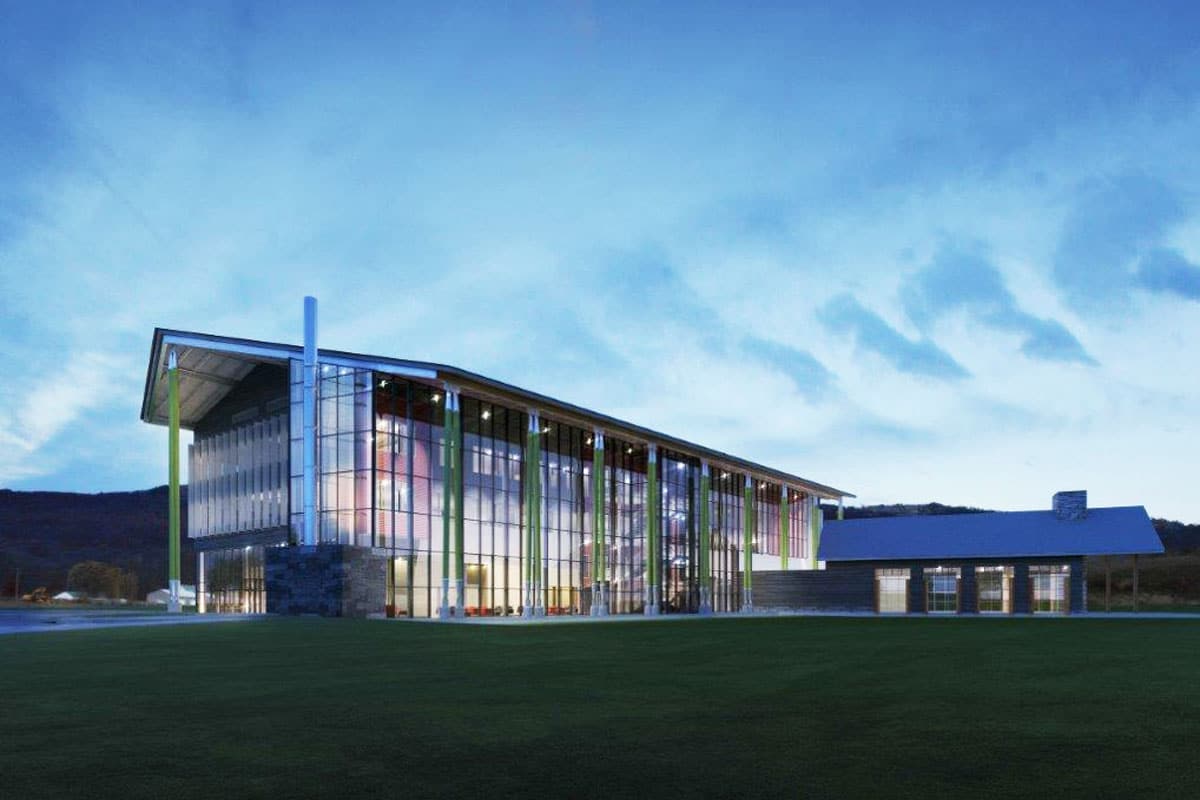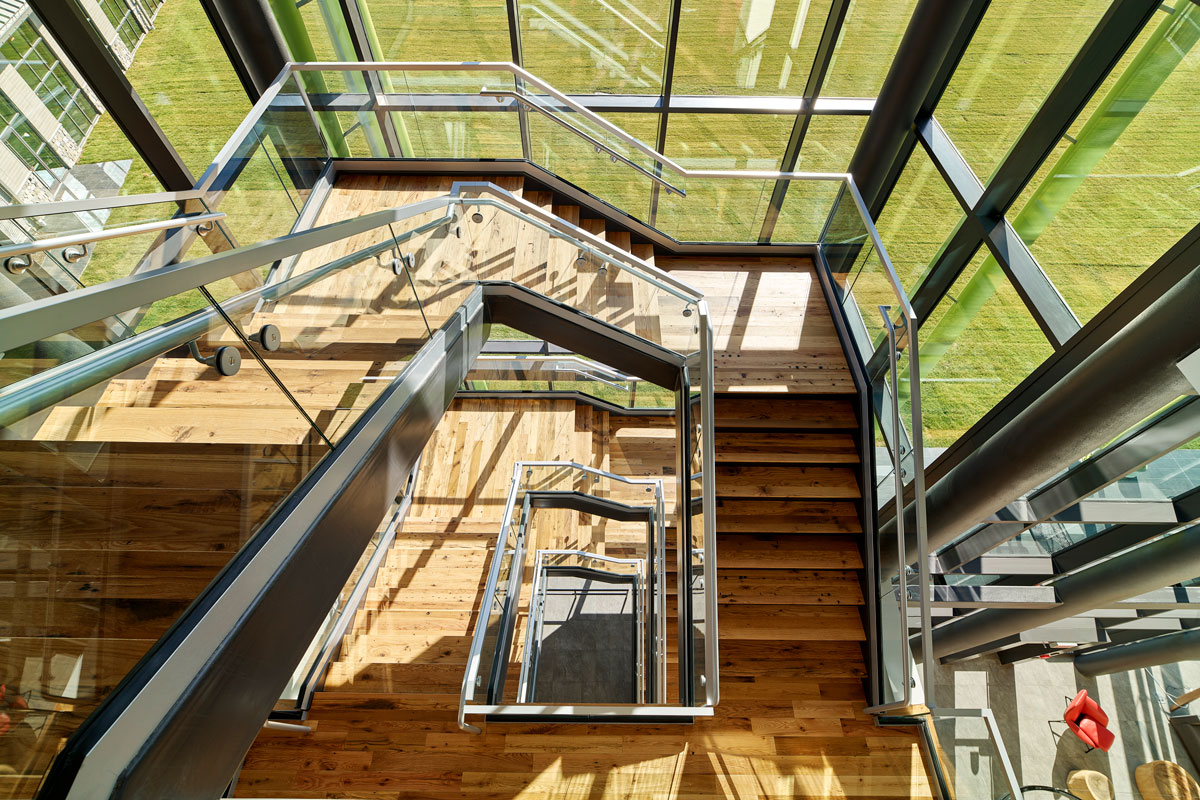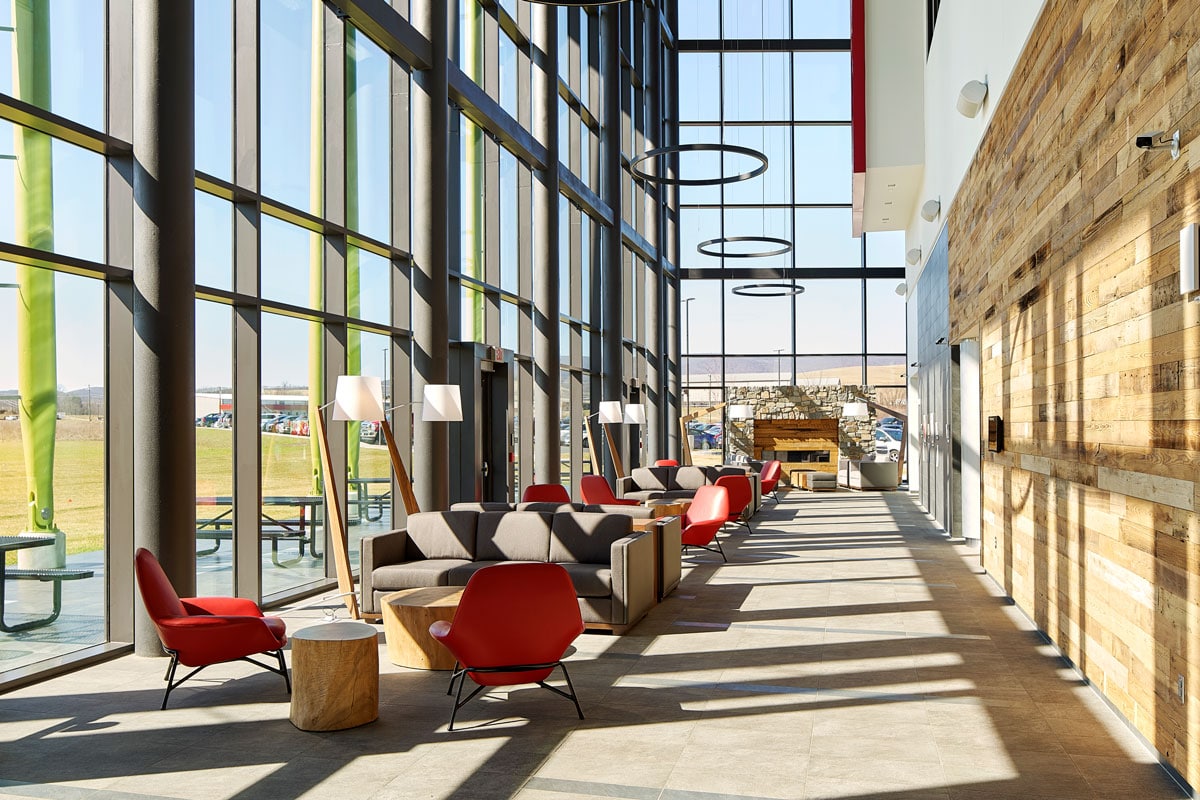
[Photo: Jeff Totaro Photography]
Water-saving plumbing fixtures, LED lighting with occupancy sensors, high-efficiency condensing boilers, and accommodations for large-scale recycling minimize wasted energy and resources while expansive natural light, reclaimed wood walls, and the preservation of the surrounding wetlands create a bright and comfortable space for employees.
Aiming to provide a holistic workplace experience for the Sheetz community, CDI designed an independent pavilion dining room that extends into the lawn and a large, southern-facing glazed porch that allows employees to experience nature throughout the workday. The campus also includes a childcare center for children of Sheetz employees. “This building is phenomenal; we are so happy to add it to what we can now call a campus,” says CEO Joe Sheetz.

[Photo: Jeff Totaro Photography]
Condensing Hydronic Boiler
Stainless-steel fire-tube boilers. Flue gases are drawn through a secondary heat exchanger that is in contact with the cooler return water, which causes the water vapor in the flue gases to condense. This change of state allows for additional heat to be removed from the flue gases before it exits out the flue. This type of boiler is rated at 95% efficiency. Standard hydronic boilers are non-condensing and typically have an efficiency of 82%.
High Efficiency Commercial Water Heater
System that raises water temperature with minimal energy loss. The Lochinvar Shield high-efficiency sealed-combustion commercial water heaters were selected for the Sheetz campus because of their ability to sustain 96% thermal efficiency over the lifetime of the equipment. These heaters have no flue tubes inside the tank, instead the water is heated in a separate stainless-steel heat exchanger. By controlling and creating high-water velocity through the heat exchanger, the heat surface areas are kept clean so thermal efficiency remains high for the life of the water heater.

[Photo: Jeff Totaro Photography]
Continuous Insulation
Insulation designed to avoid thermal bridging. When metal is used to connect the exterior components of a building directly to the interior framing, this causes a thermal bridge. This thermal path of least resistance allows heat (or cold) to escape, creating a vulnerability for cold spots and allowing moisture problems. Using materials that eliminate the thermal bridge helps to avoid unnecessary heating and cooling costs.
